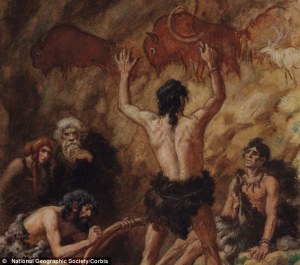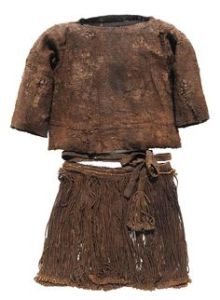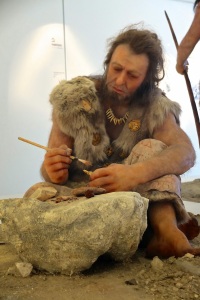FASHION
The first known humans to make clothing, Neanderthal man, survived from about 200,000 B.C.E. to about 30,000 B.C.E.
During this time the earth’s temperature rose and fell dramatically, creating a series of ice ages throughout the northern areas of Europe and Asia where Neanderthal man lived. With their compact, muscular bodies that conserved body heat, Neanderthals were well adapted to the cold climate of their day. But it was their large brain that served them best. Neanderthal man learned to make crude but effective tools from stone. Tools such as spears and axes made Neanderthals strong hunters, and they hunted the hairy mammoths, bears, deer, musk oxen, and other mammals that shared their environment. At some point, Neanderthals learned how to use the thick, furry hides from these animals to keep themselves warm and dry. With this discovery, clothing was born.
These date to about 100,000 B.C.E. Archeologists believe that these early humans cut the hides into shapes they liked, making holes for the head and perhaps the arms, and draped the furs over their bodies.
Soon their methods likely grew more sophisticated. They may have used thin strips of hide to tie the furs about themselves, perhaps in the way that belts are used today.
Needles were made out of slivers of animal bone; they were sharpened to a point at one end and had an eye at the other end. With a needle, Cro-Magnon man could sew carefully cut pieces of fur into better fitting garments. Evidence suggests that Cro-Magnon people developed close-fitting pants and shirts that would protect them from the cold, as well as shawls, hoods, and long boots. Because they had not learned how to tan hides to soften them, the animal skin would have been stiff at first, but with repeated wearings it would become very soft and comfortable. Jacquetta Hawkes, author of The Atlas of Early Man, believes that Cro-Magnon clothes approached those of modern Eskimos in their excellence of construction.
Much of what is known about early clothing is a patchwork of very little evidence and good guesses. Only fragments of very early clothing have survived, so archeologists have relied on cave drawings, carved figures, and such things as the imprint of stitched-together skins in a fossilized mud floor to develop their picture of early clothing. The discovery of the remains of a man who died 5,300 years ago in the mountains of Austria, near the border with Italy, helped confirm much of what these archeologists had discovered. The body of this male hunter had been preserved in ice for over five thousand years, and many fragments of his clothing had survived.
references:




